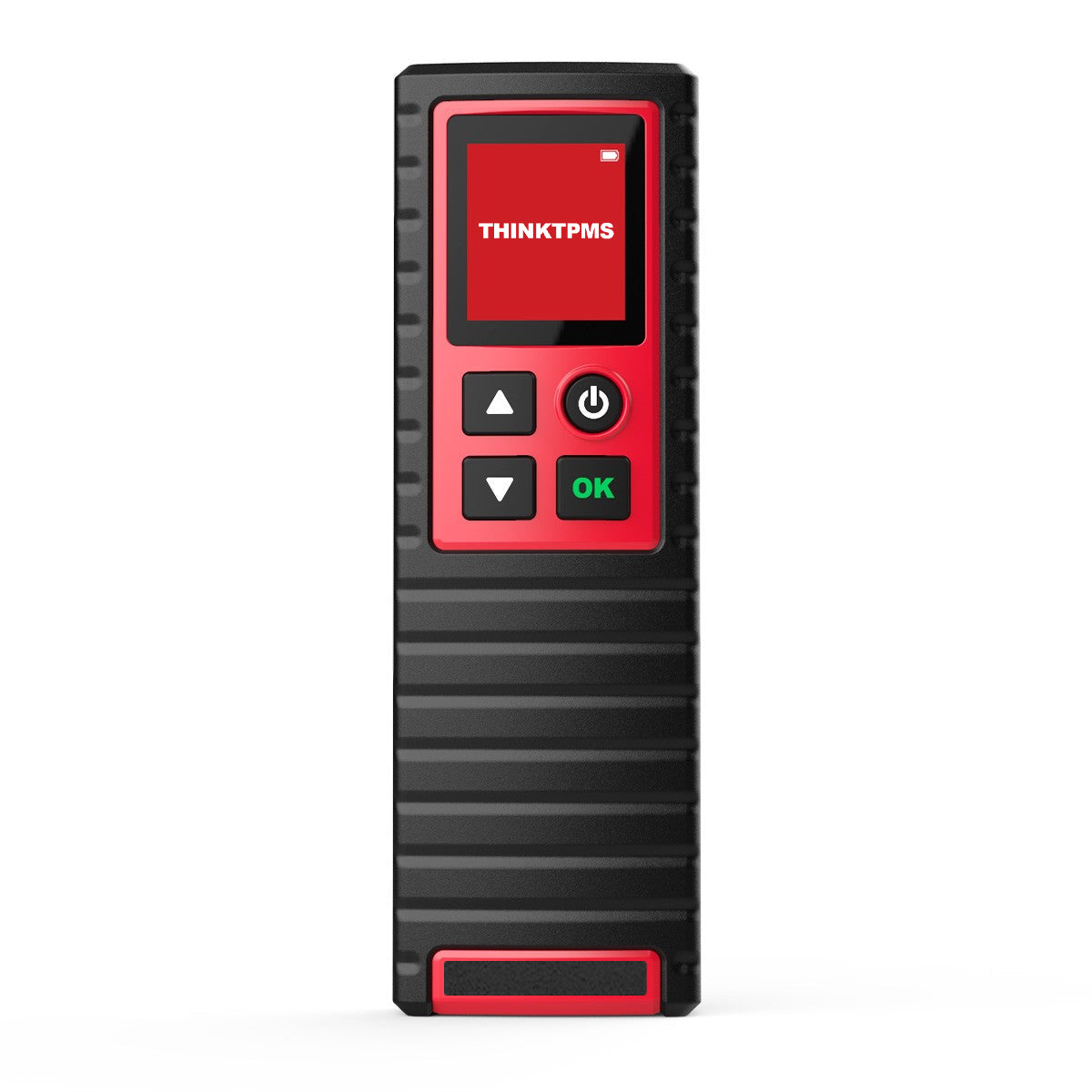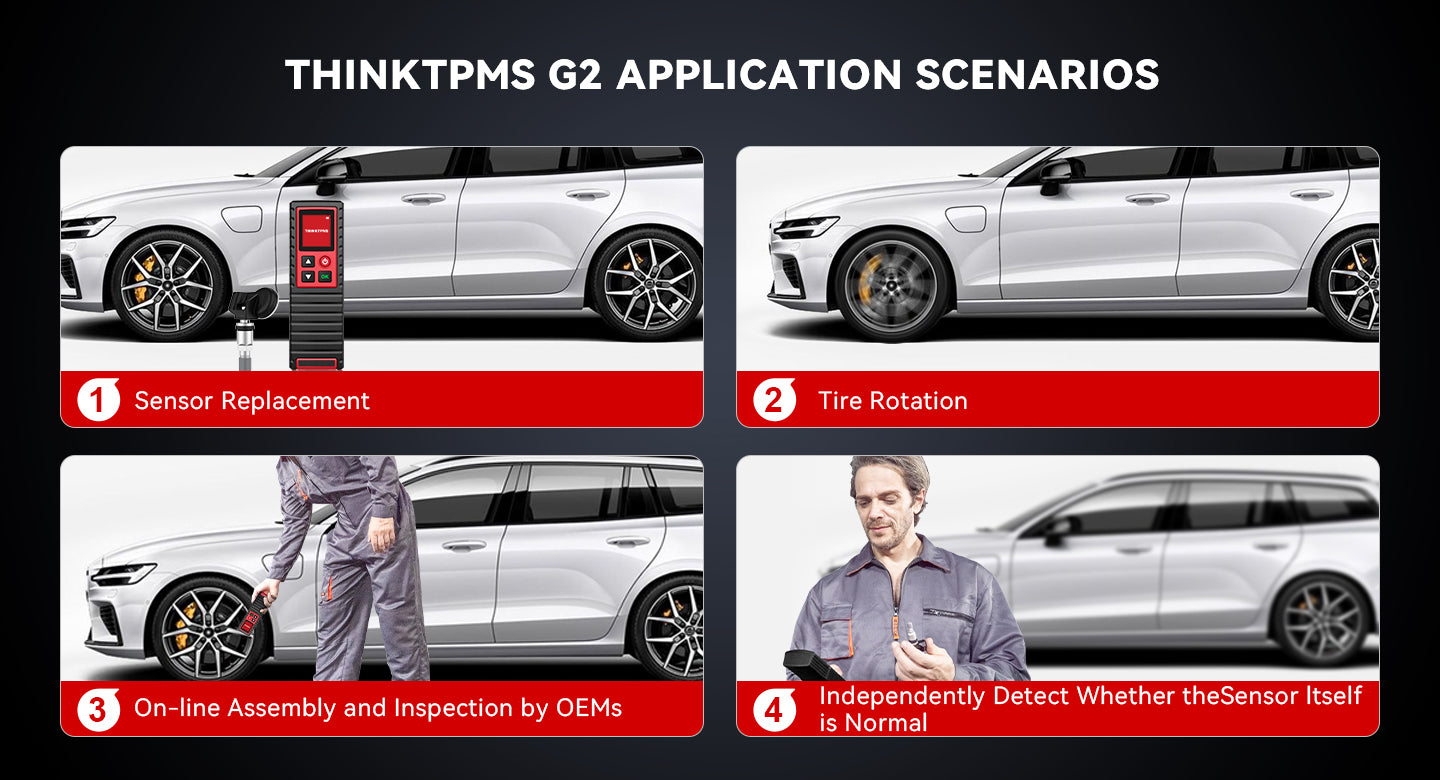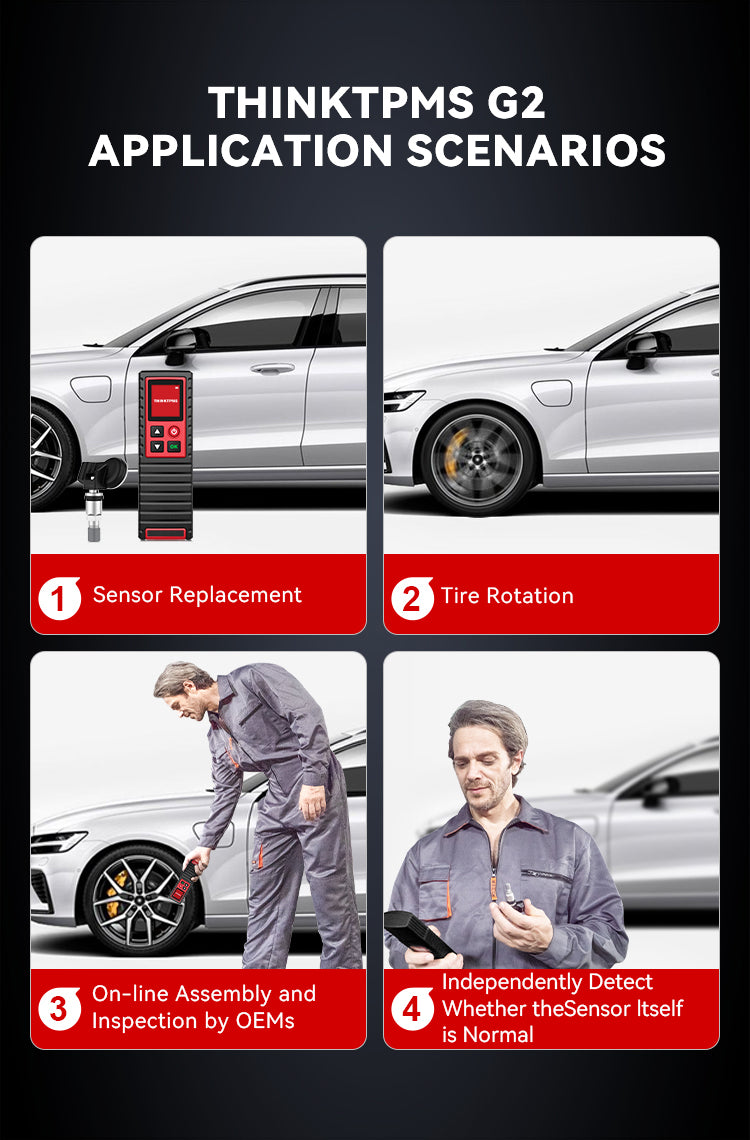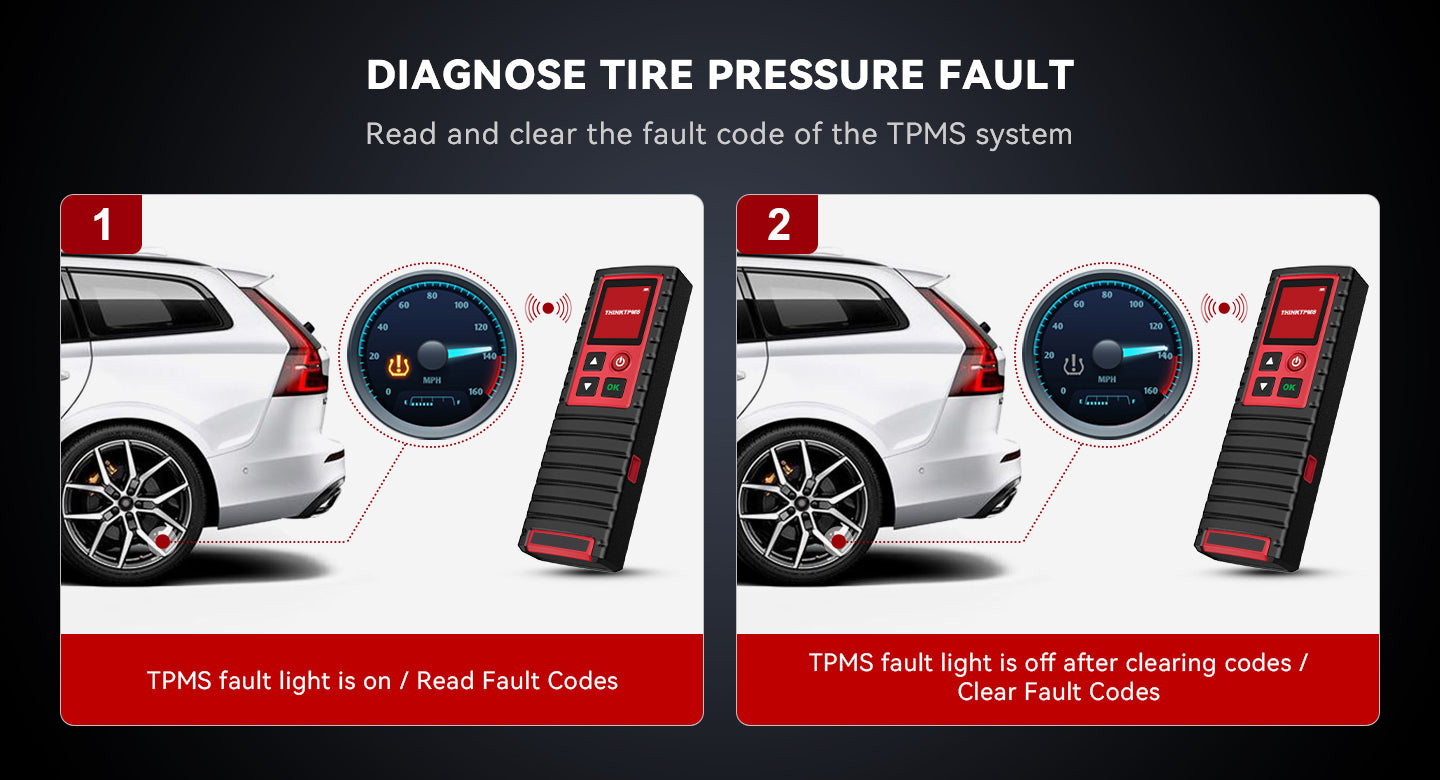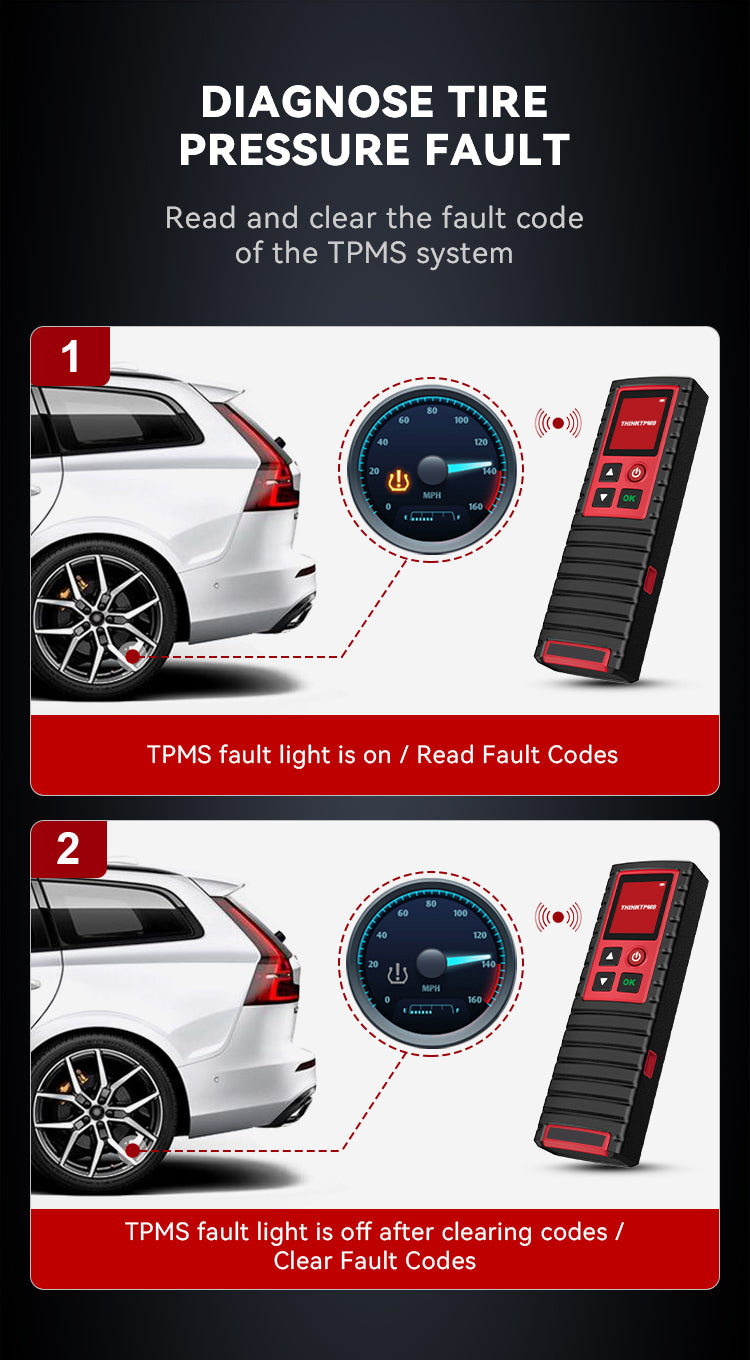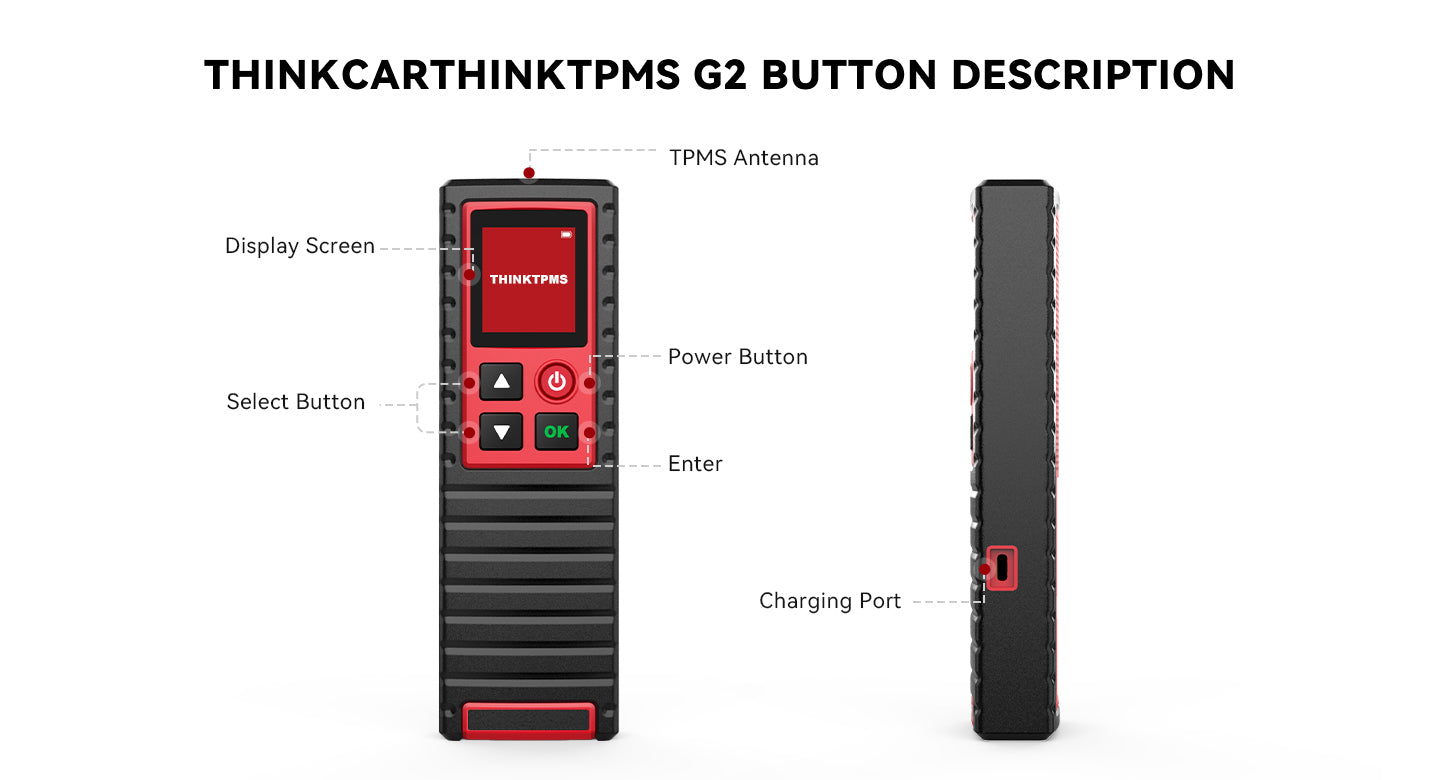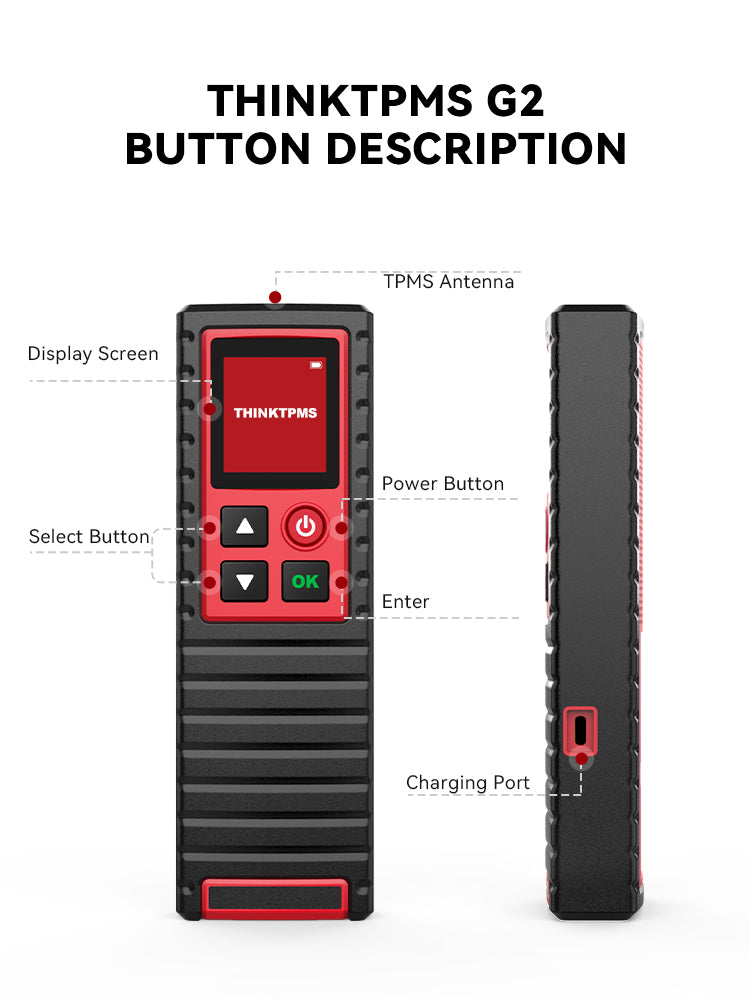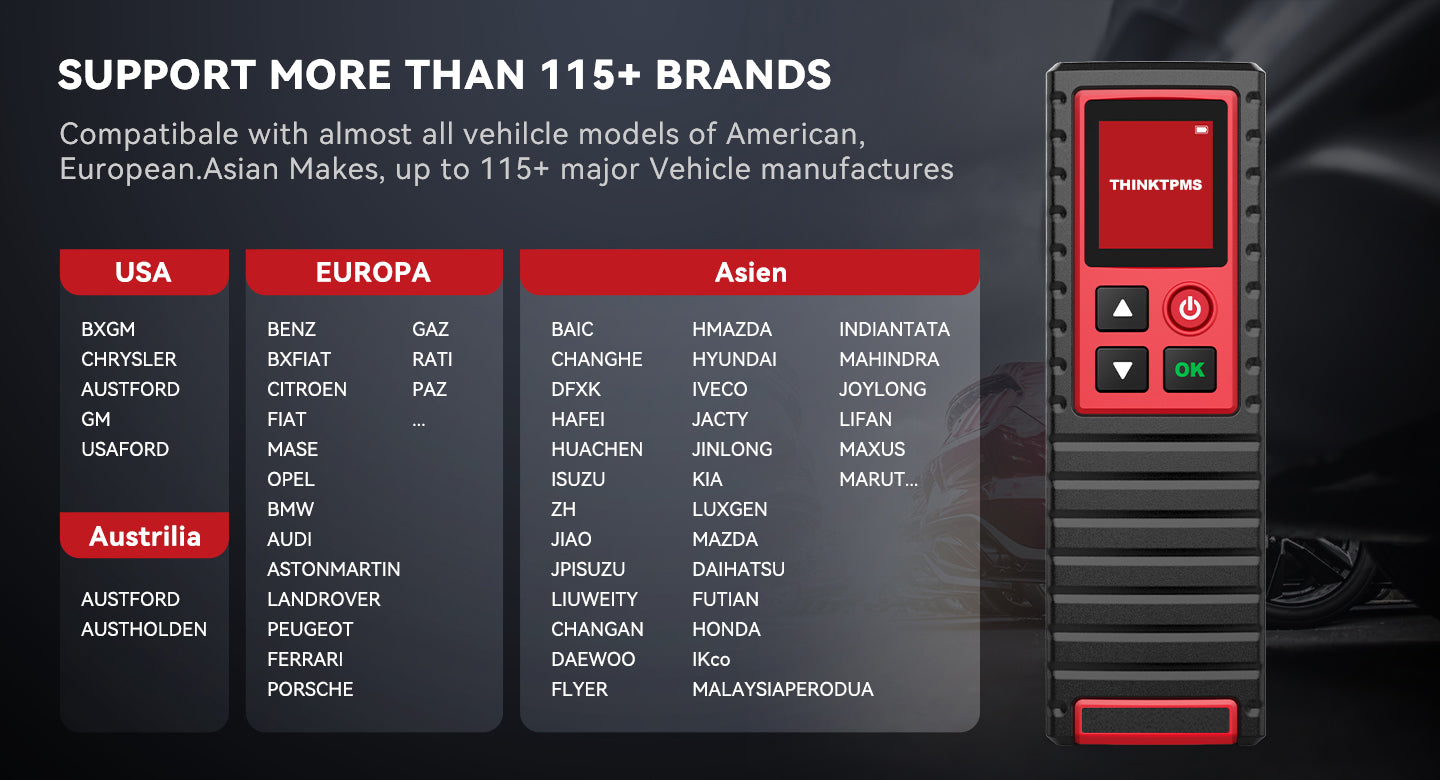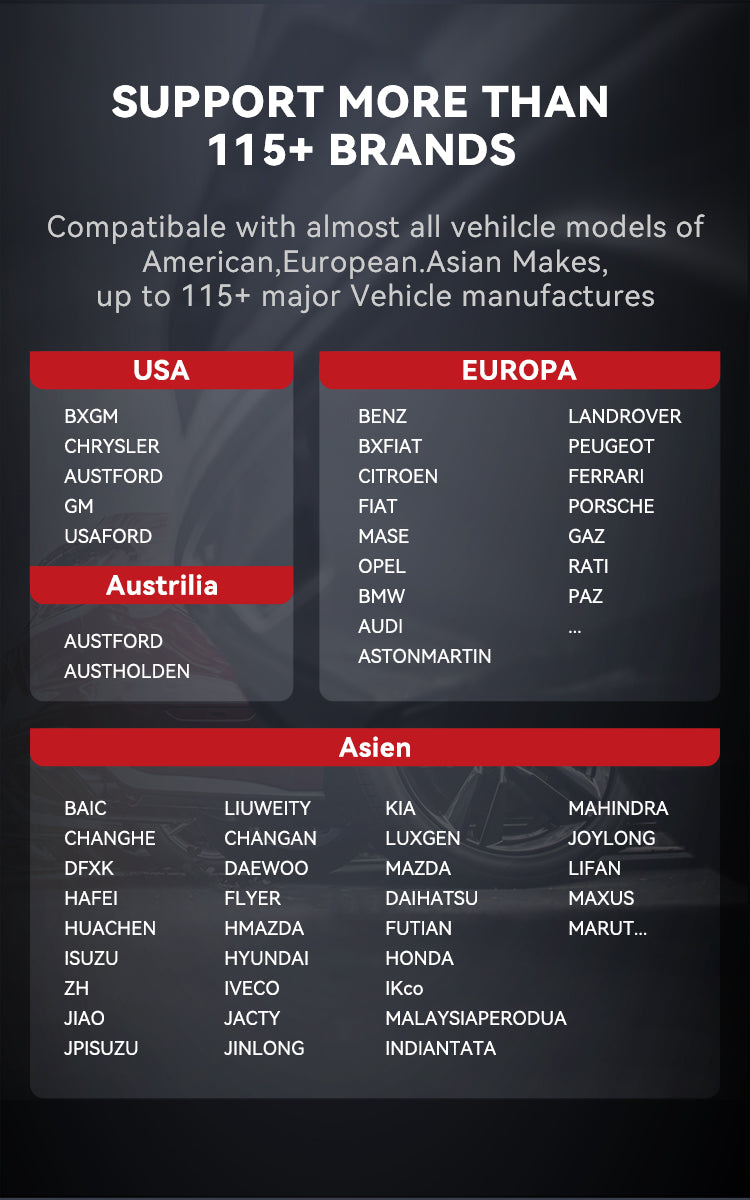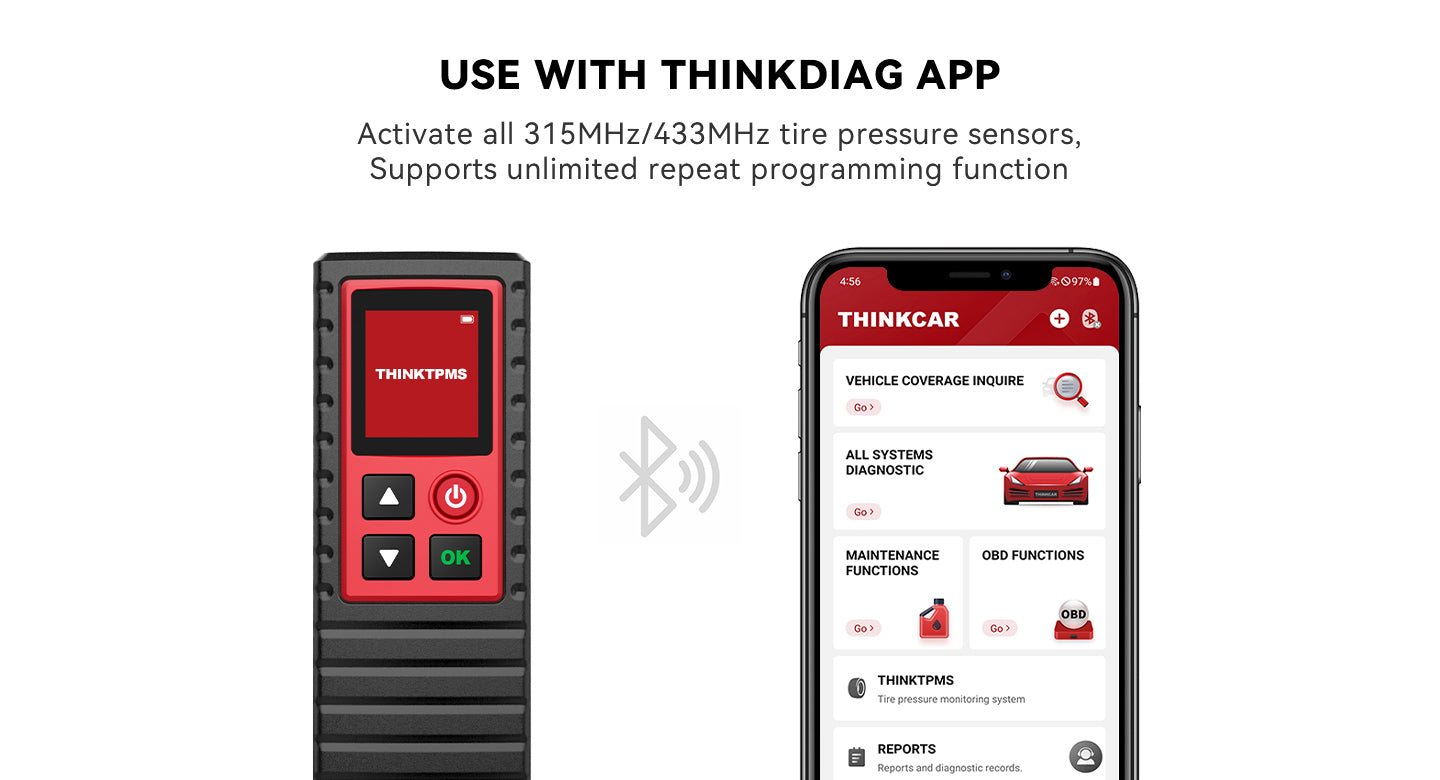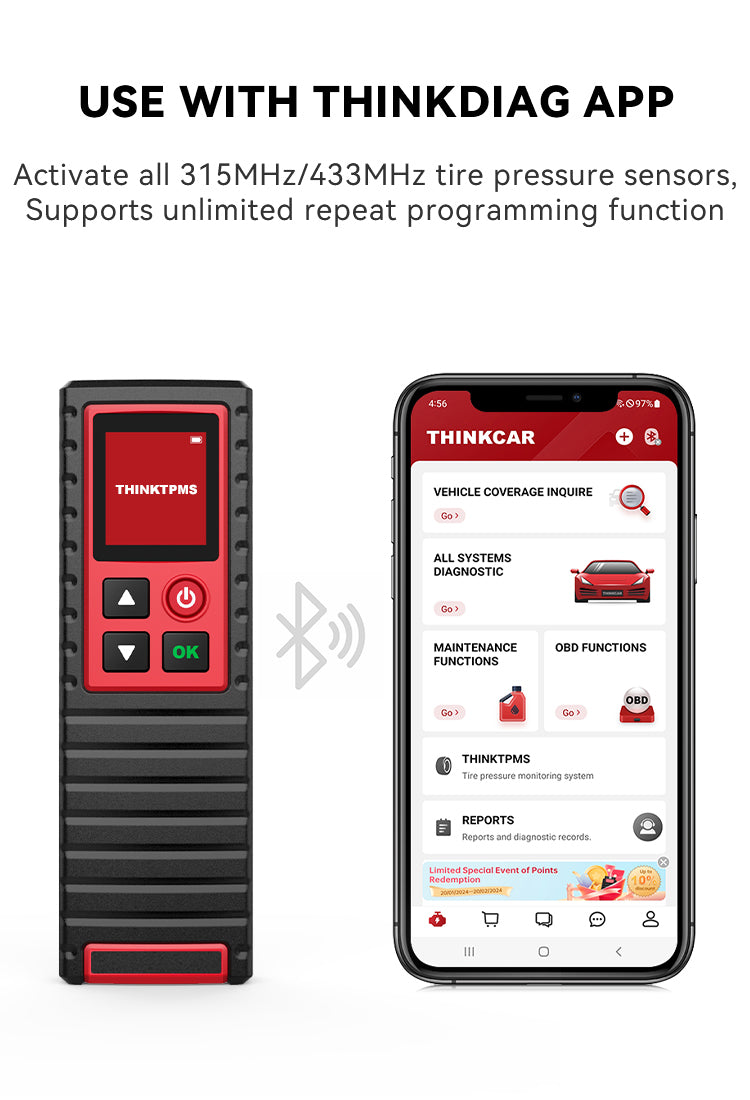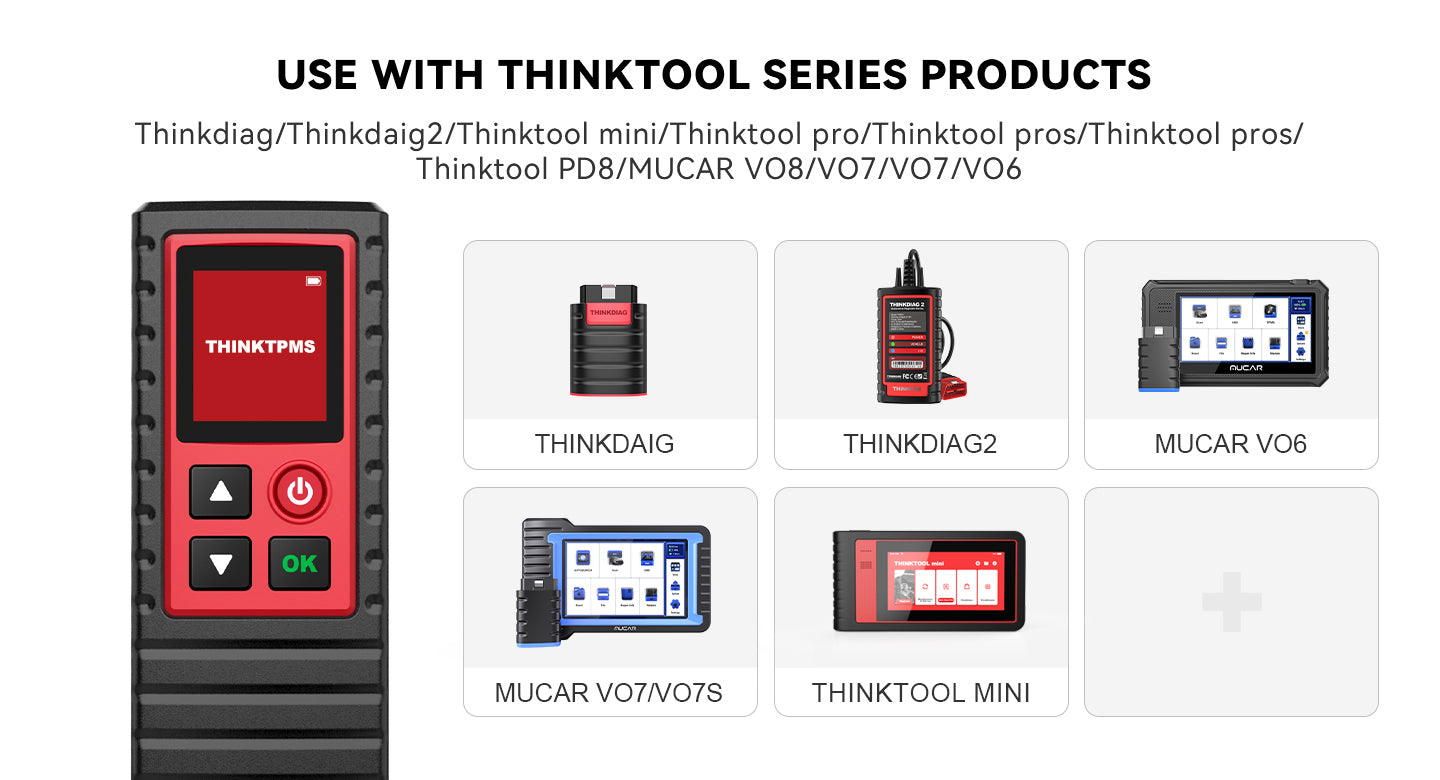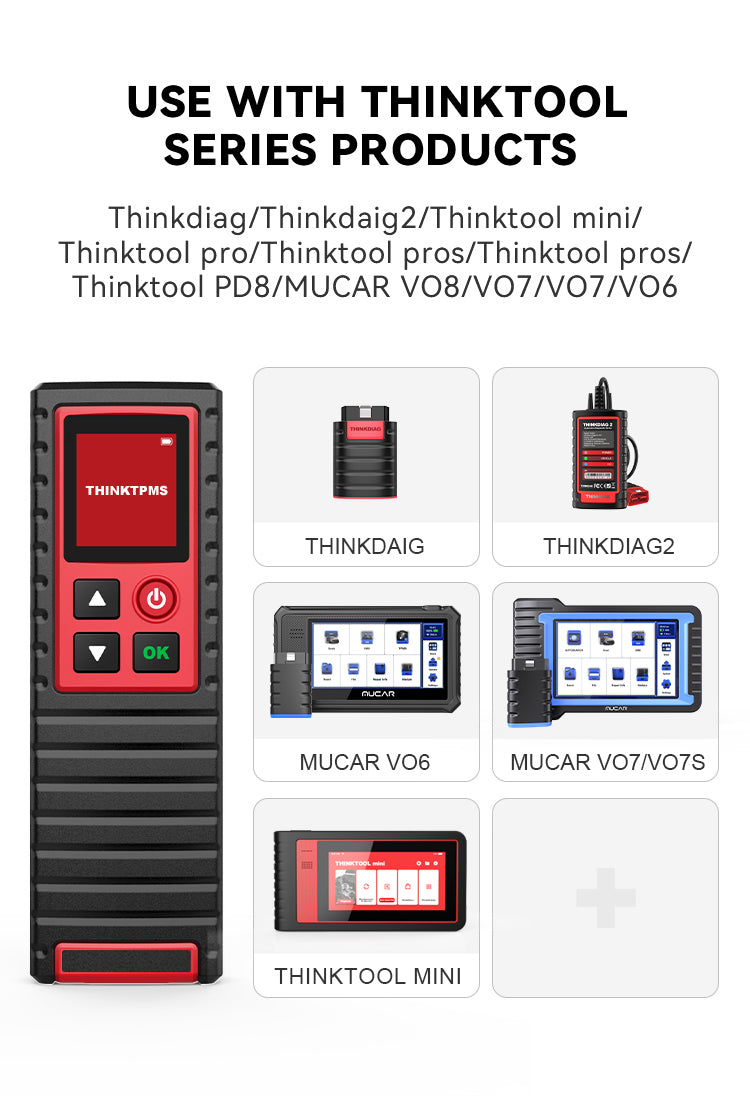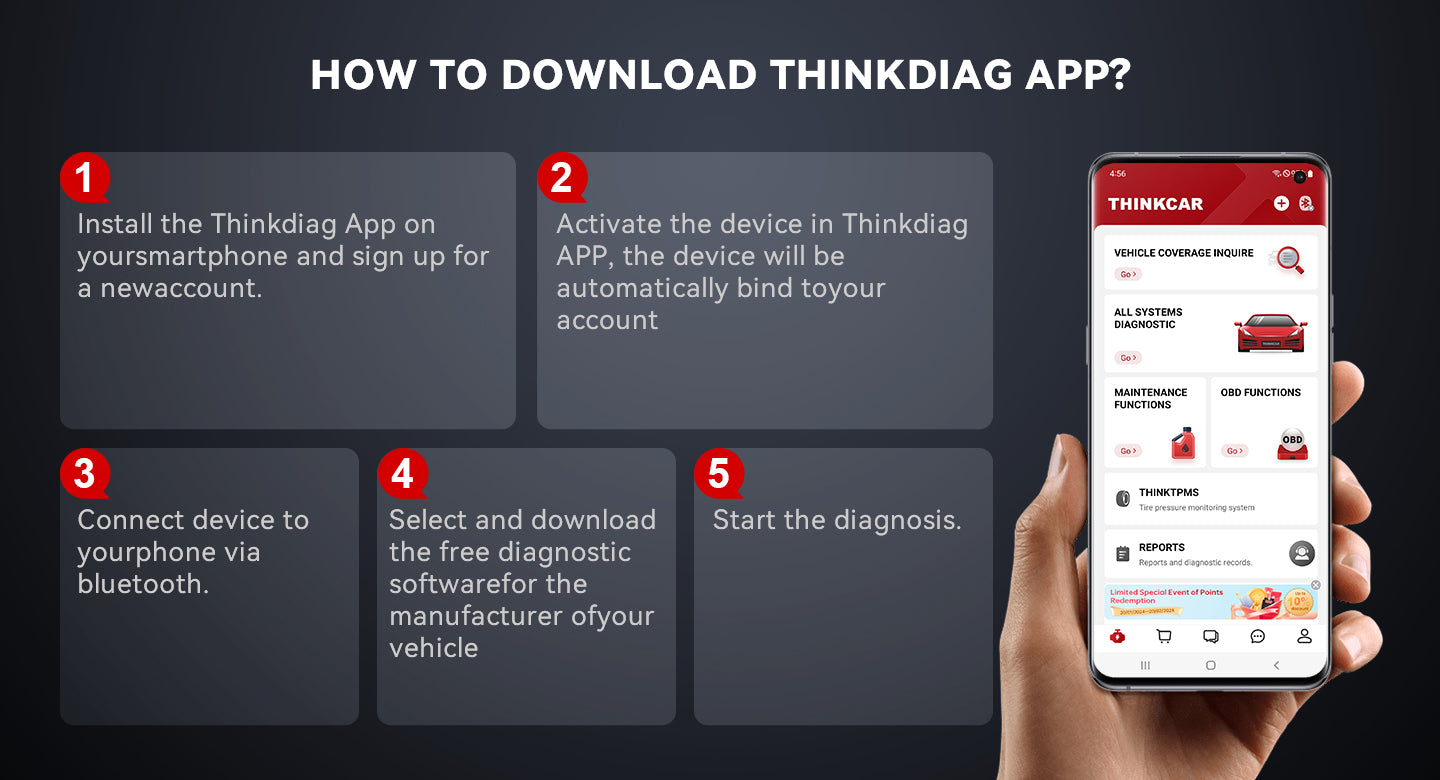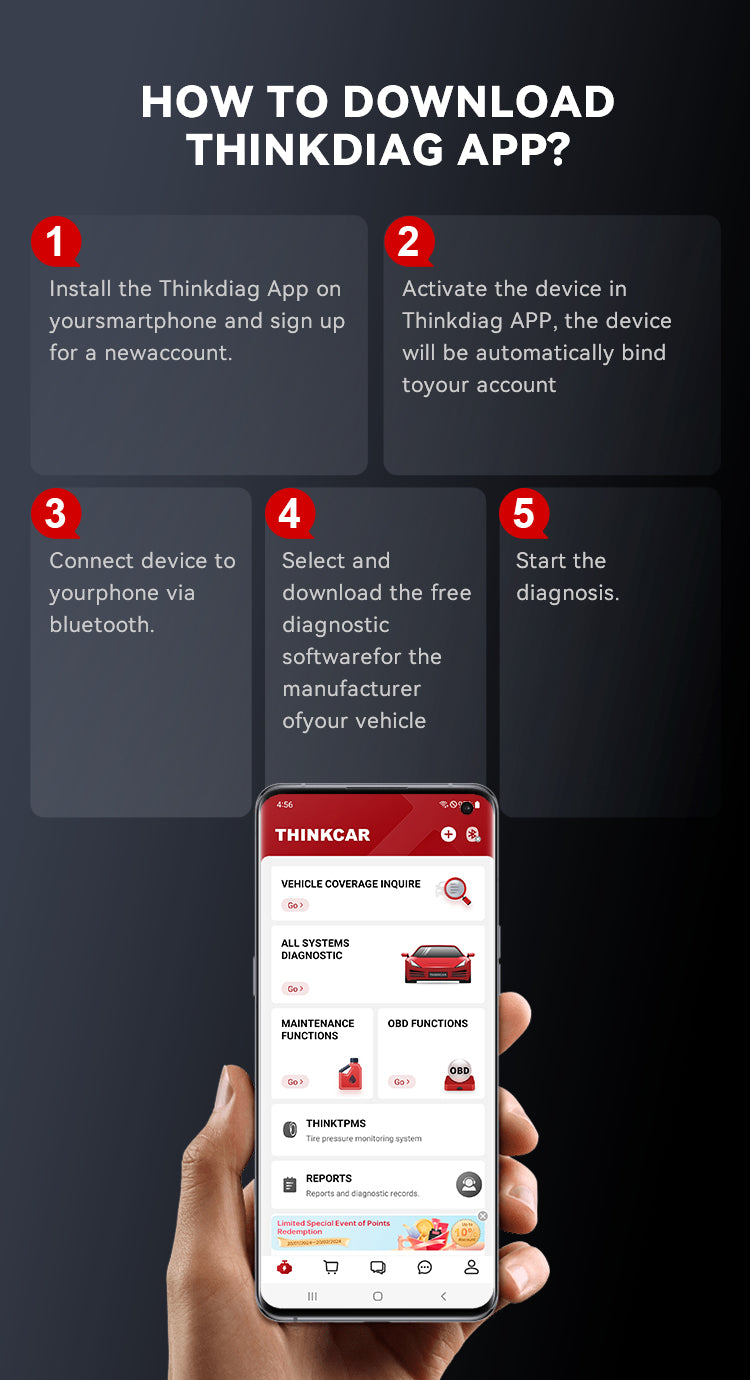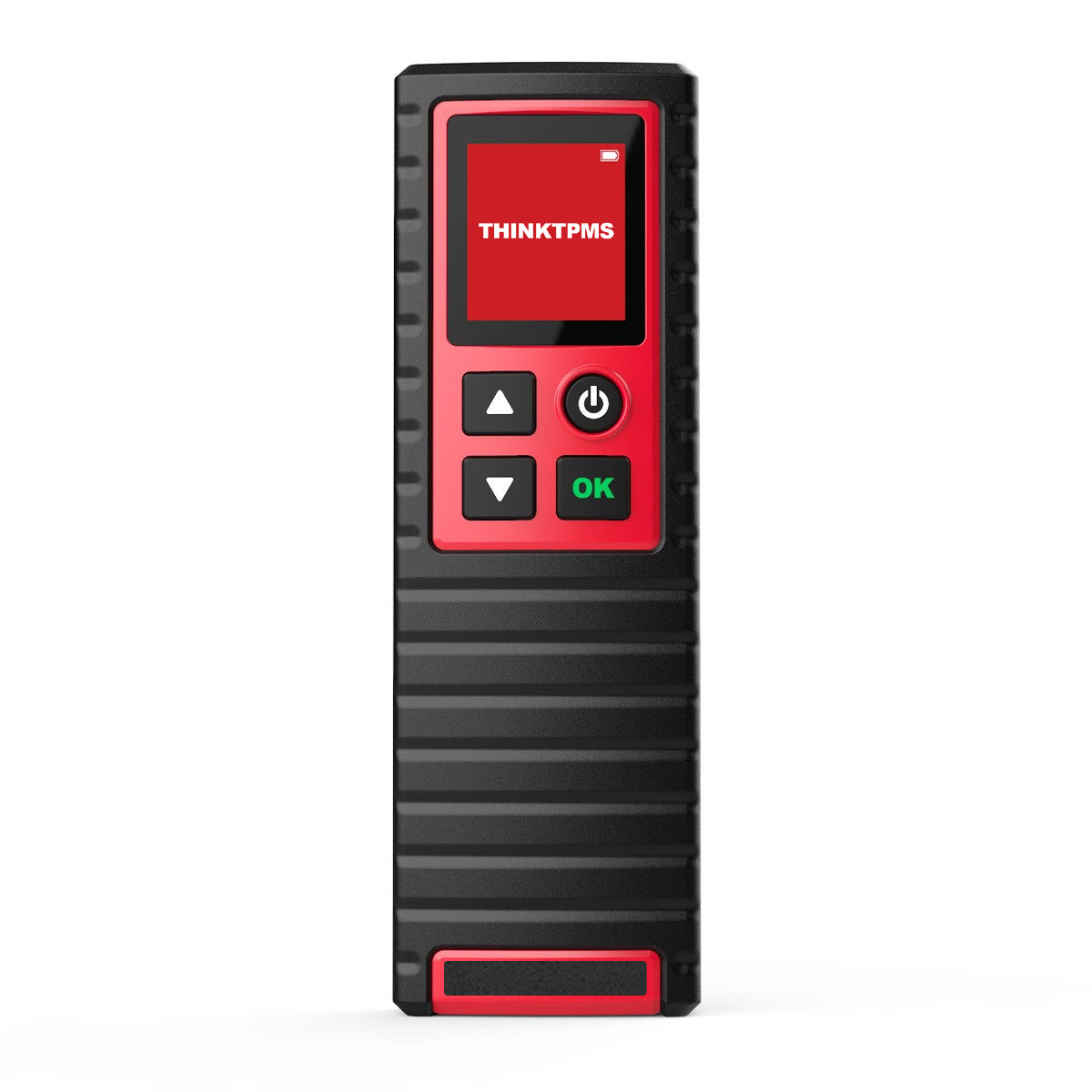
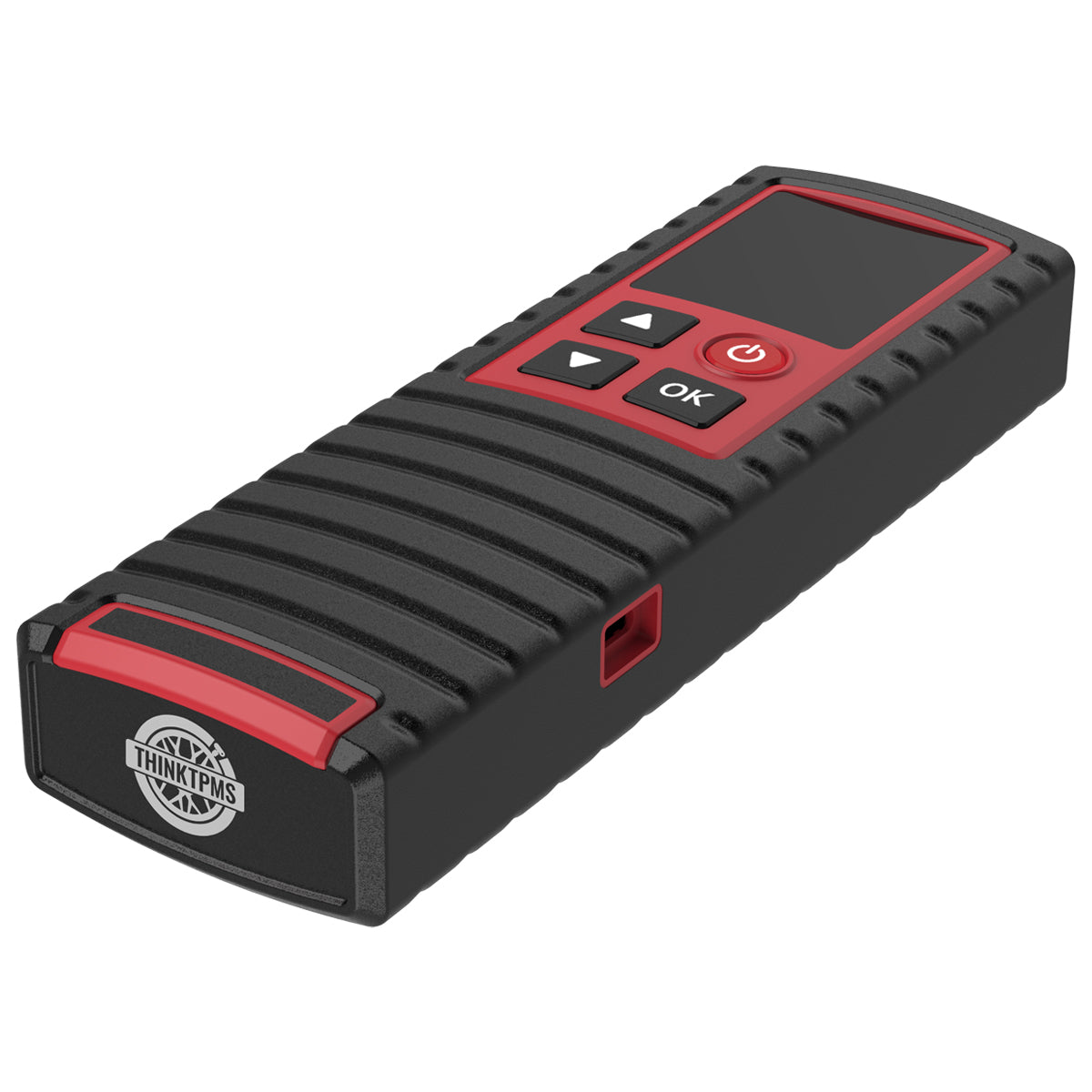
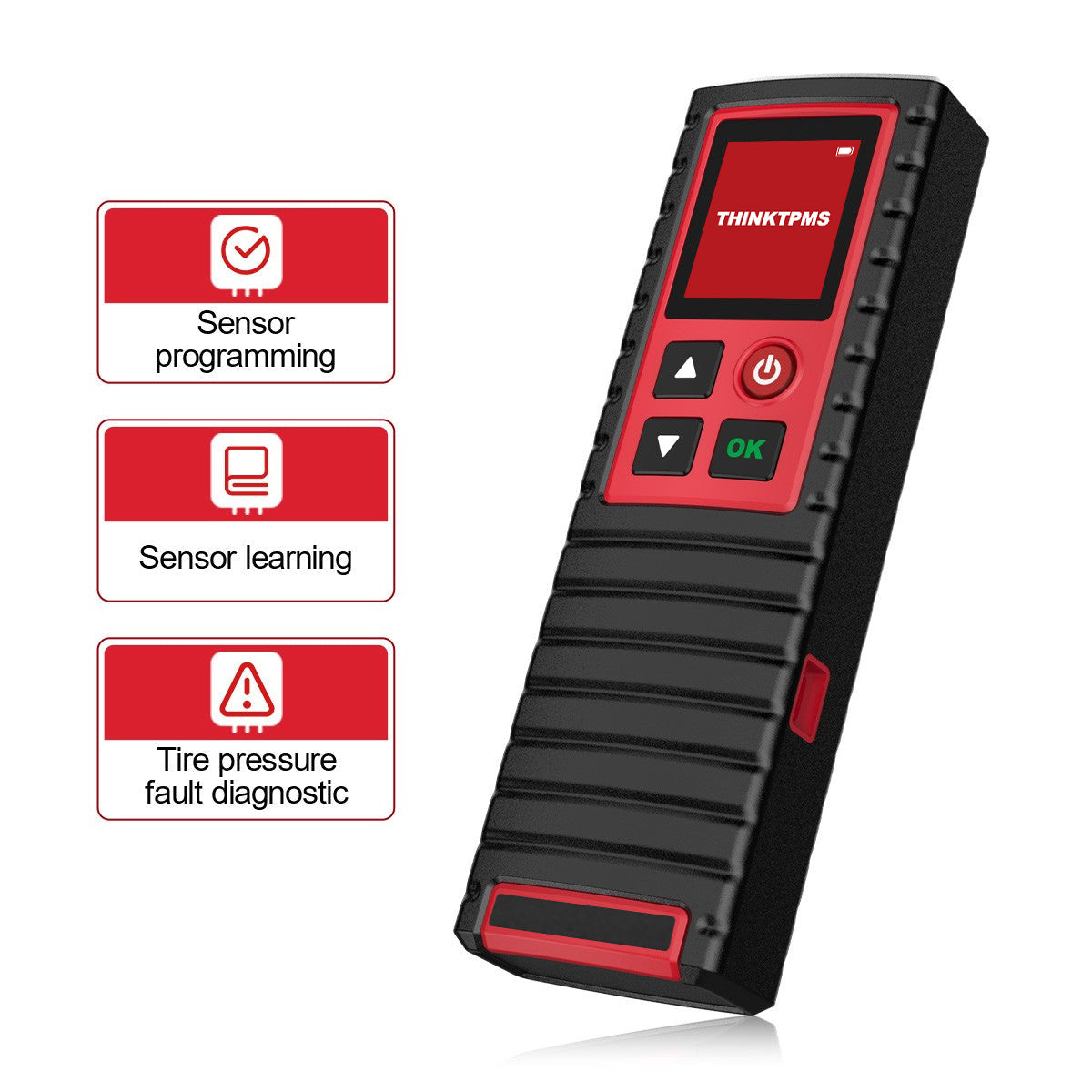
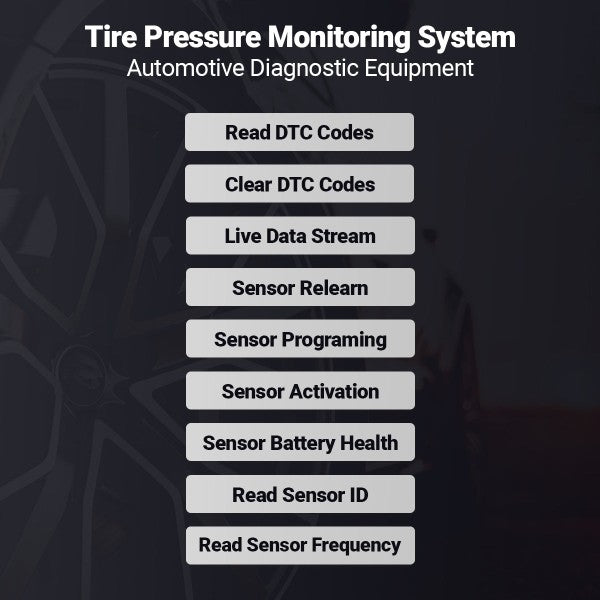
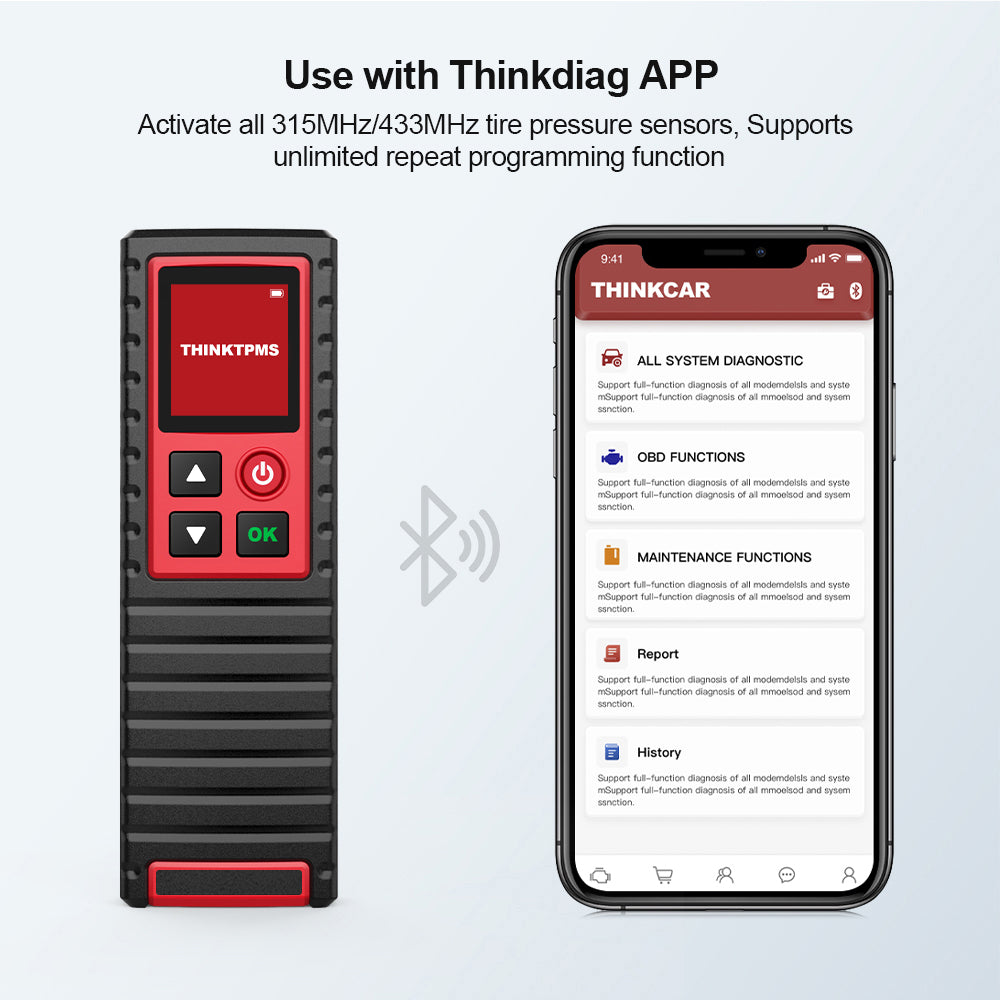
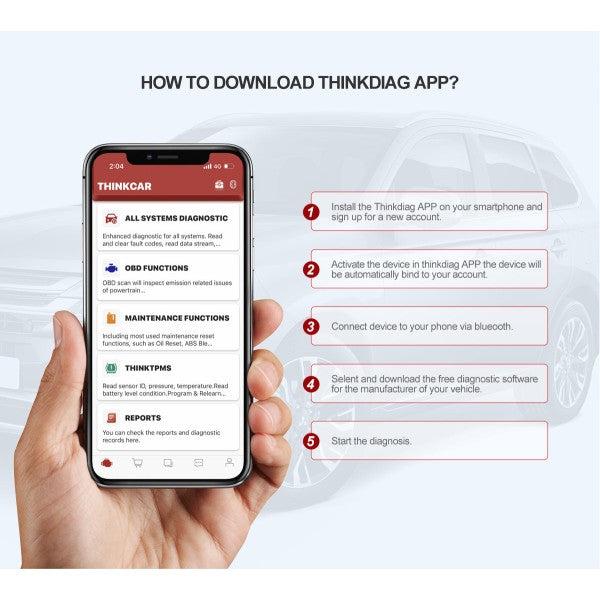
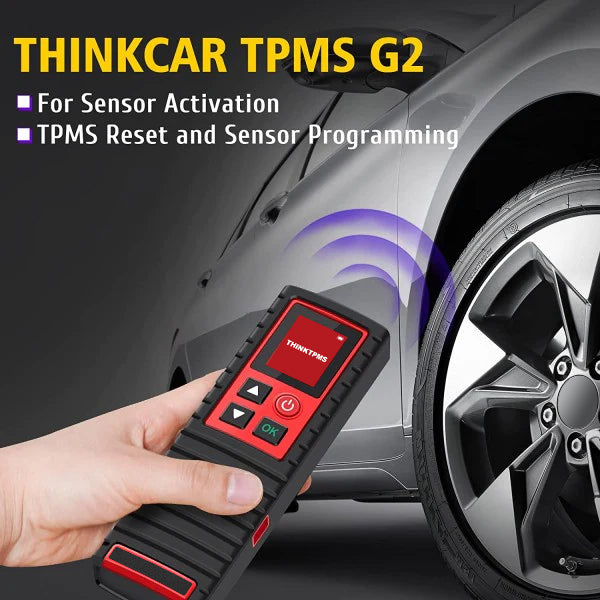
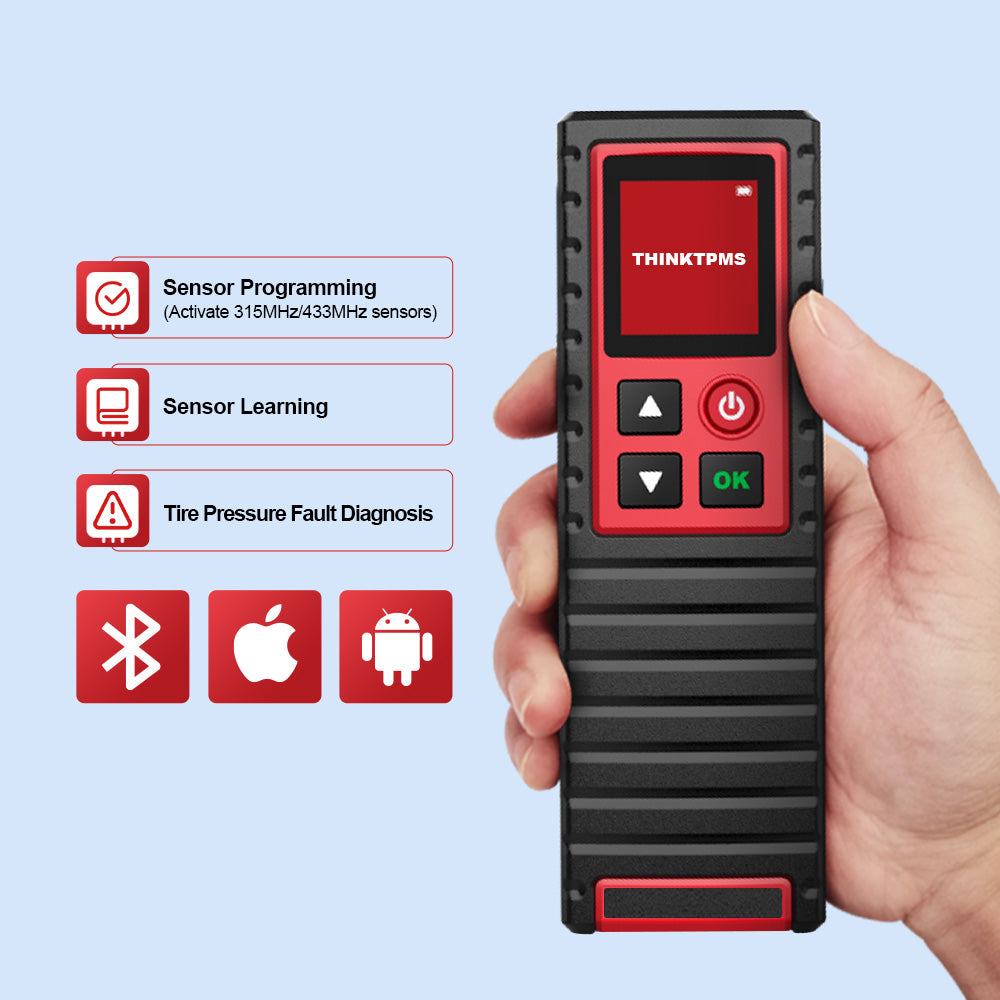
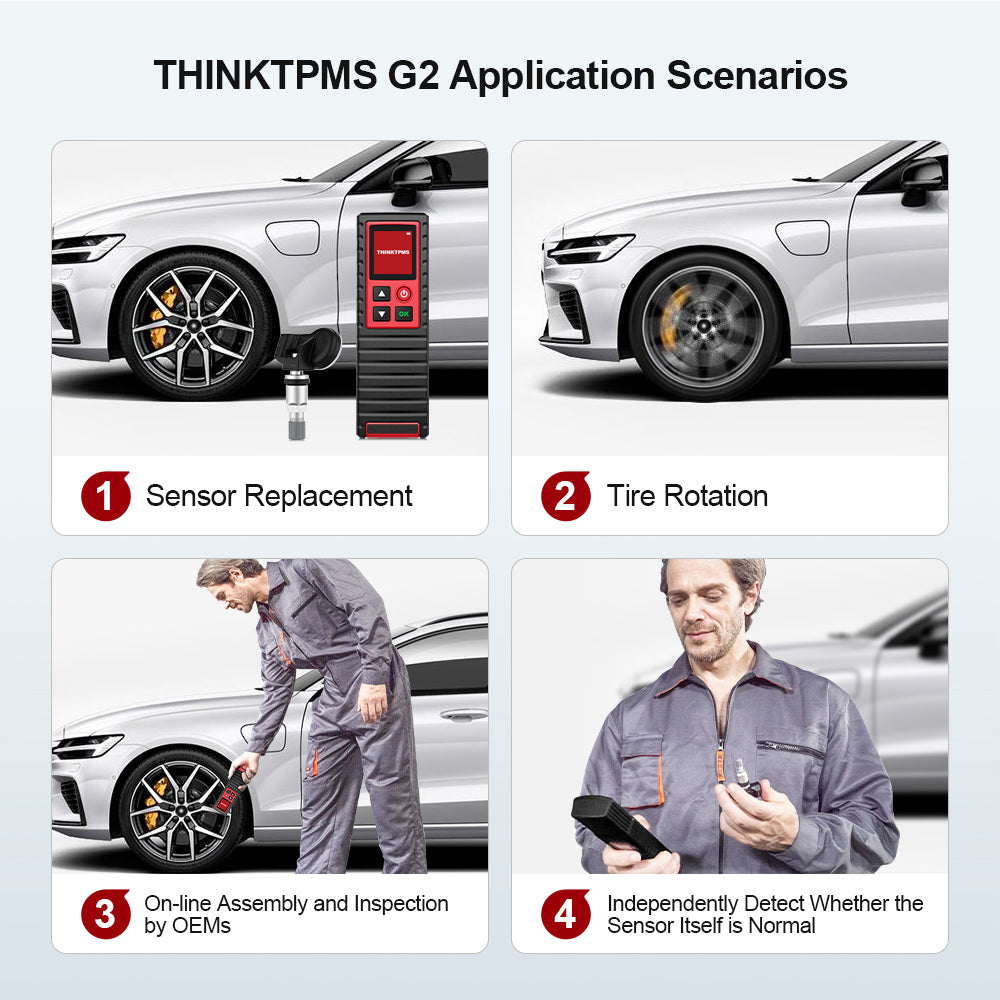
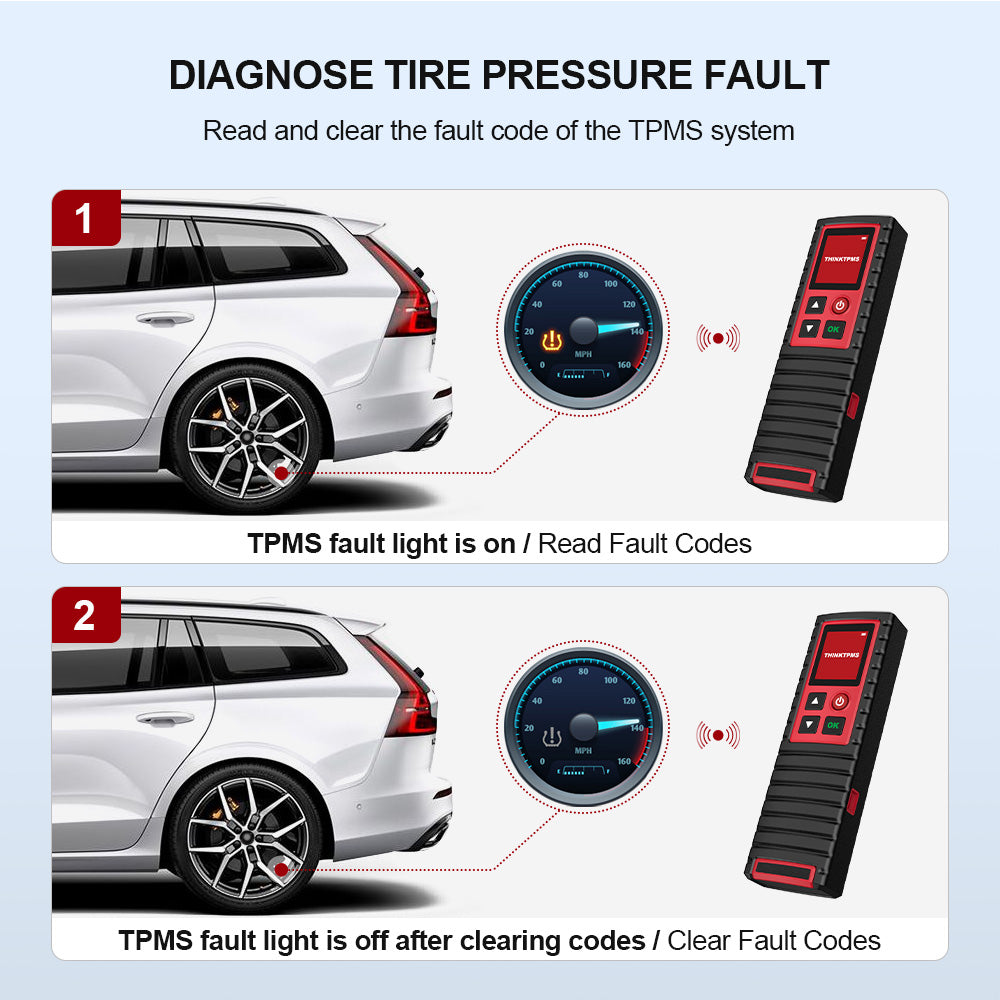
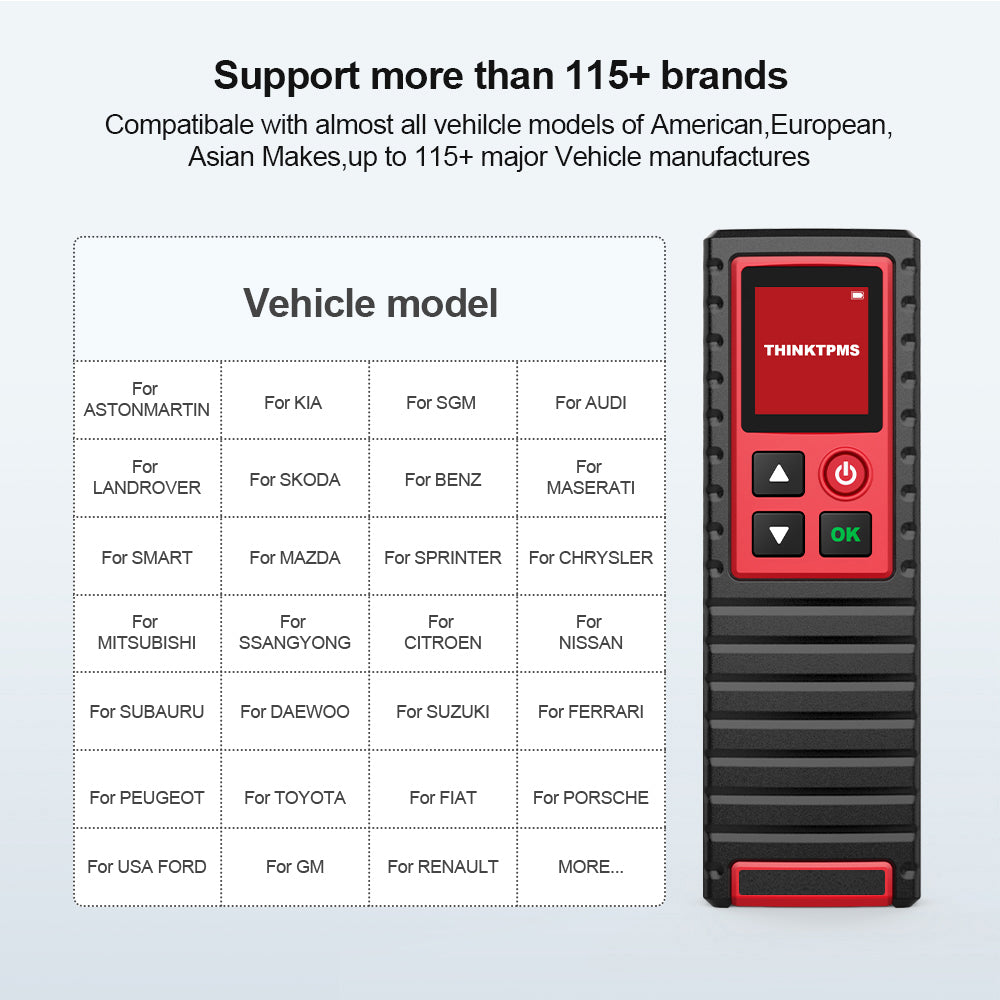
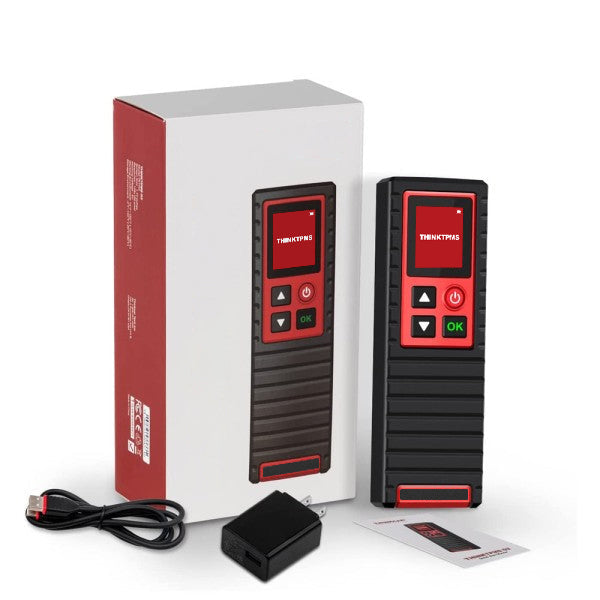
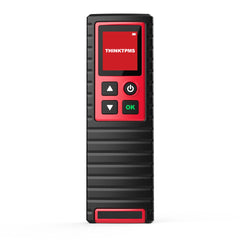
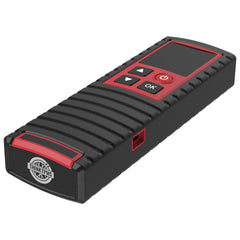
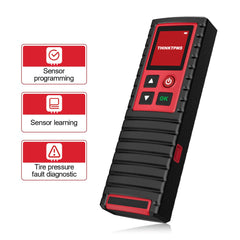
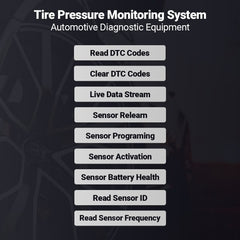








THINKTPMS G2
- $119.99
$169.99- $119.99
- Unit price
- per
Fast Shipping
2-7 Days Fast Shipping to US/EU
24/7 Remote diagnosis
30Days Free Returns
THINKCAR Thinktpms G1/G2 is a new generation of tire pressure diagnosis tool, which can realize Sensor Activation, Sensor Programming, Sensor Learning, Tire Pressure Fault Diagnosis. It can be connected to Thinkdiag APP via Bluetooth and used to easily diagnose tire faults on mobile phones. It can also be used with THINKTOOL series products to help you diagnose car tire information.
THINKTPMS G2 Application Scenarios
1. Sensor Replacement.
2. Tire Rotation.
3. On-line Assembly and Inspection by OEMs.
4. Independently Detect Whether the Sensor Itself is Normal.
Support Sensor Activation
THINKCAR Thinktpms G2 can activate all 315MHz/433MHz tire pressure sensors, and can read, copy, write sensor IDs and read tire pressure data (pressure, temperature, battery status)
Support Sensor Programming
THINKCAR Thinktpms G2 supports unlimited repeat programming function, covering more than 98% of imported models with tire pressure system, and supports multiple ID generation methods: manual, copy, and automatic creation.
Support Sensor Learning
The tire pressure matching learning function can perform tire pressure fault diagnosis through prompt learning steps, including code reading and code clearing.
Diagnose tire pressure fault
Read and clear the fault code of the TPMS system
Support more than 140+ brands
For OBDII diagnostics, the obd2 code reader works great for most cars built in 1996 or later, being compatible with following protocols:
-ISO 14230-4 (KWP2000)
-ISO 15765-4 (CAN)
-ISO 9141-2 (iso)
-ISO 14229 (uds)
-SAE J1850 (VPW & PWM)
--Original protocols of makers
For advanced functions as active test, all system diagnostics, and maintenance service, it covers 95% of car models available in the market including:
-Asia: for Daewoo, for Honda, for JP Isuzu, for Kia, for Mazda, for Mitsubishi, for Nissan, for SGM, for Subaru, for Suzuki, for Toyota,for Hyundai, for Ssangyong
-Europe: for Aston Martin, for Audi, for Benz, for BMW, for Citroen, for Ferrari, for Fiat, for Land Rover, for Maserati, for Opel, for Porsche, for Renault, for Rover, for Saab, for Seat, for Skoda, for Smart, for Sprinter, for Volvo, for VW, for Peugeot
--America: for Chrysler, for USA-Ford, for GM
And keep updating.
Two-ways To Use ThinkTPMS G1/G2
1. Download the Thinkdiag APP (Android version), turn on the Bluetooth of the mobile phone, and click the Thinktpms function on the APP to diagnose tire pressure.
2. Use with thinktool series products, Thinktool min, Thinktool pro series, Thinktool PD8, Thinkdaig, Thinkdiag2...
How to download Thinkdiag APP?
1. Install the Thinkdiag App on your smartphone and sign up for a new account.
2. Activate the device in Thinkdiag APP,the device will be automatically bind to your account.
3. Plug the device into the OBD port and then turn on your vehicle.
4. Connect device to your phone via bluetooth.
5. Select and download the free diagnostic software for the manufacturer of your vehicle.
6. Start the diagnosis.
You may also like
- $119.99
$169.99- $119.99
- Unit price
- per
- $119.99
$169.99- $119.99
- Unit price
- per
- $119.99
$169.99- $119.99
- Unit price
- per
- $119.99
$169.99- $119.99
- Unit price
- per
- $119.99
$169.99- $119.99
- Unit price
- per
- $119.99
$169.99- $119.99
- Unit price
- per
- $119.99
$169.99- $119.99
- Unit price
- per
- $119.99
$169.99- $119.99
- Unit price
- per
- $119.99
$169.99- $119.99
- Unit price
- per
- $119.99
$169.99- $119.99
- Unit price
- per
- Choosing a selection results in a full page refresh.
